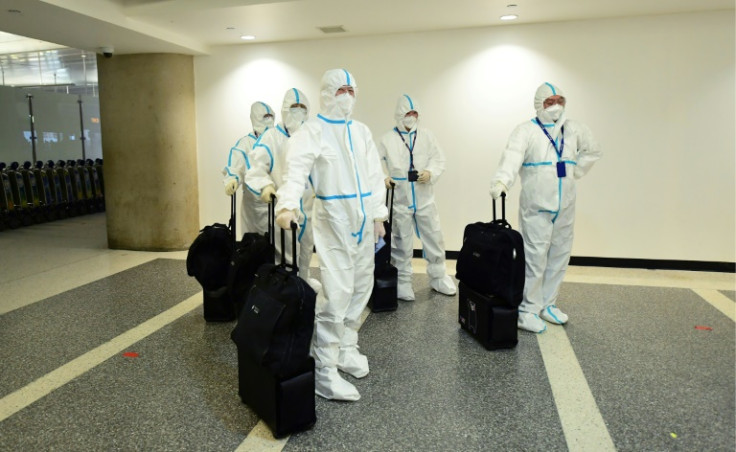Omicron And Tapering Could Take Global Markets On A Wild Ride
The spread of the Omicron variant of COVID-19 when the Federal Reserve and the ECB are rolling back bond purchases will add uncertainty to global markets already on edge by fears of stagflation -- a situation of slower growth and rising inflation.
Omicron could make the problem of stagflation worse by magnifying supply chain bottlenecks, causing further supply shortages and price hikes at a time inflation is already elevated and widespread in several regions around the world. For instance, in America, inflation is running at 6.2%, three times the Fed's target, while inflation is running over 20% in Turkey. Meanwhile, Omicron could depress demand for certain services like traveling and eating out by re-igniting infection fears among the unvaccinated and lockdown by central and regional governments, meaning slower growth.
Already, government officials worldwide have expressed their concerns about the prospect of slower global growth. Last week, for instance, U.S. Treasury Secretary Janet Yellen told Reuters that Omicron poses a "significant threat to the global economy." "Hopefully it's not something that's going to slow economic growth significantly," Yellen said, adding, "There's a lot of uncertainty, but it could cause significant problems. We're still evaluating that." And so are financial markets, which have been caught in fear of higher inflation, squeezing the bottom line of publicly listed companies, and slower growth, which is shrinking the top line.
Meanwhile, on Saturday, Goldman Sachs cut its U.S. economic growth outlook to 3.8% from 4.2% for 2022, raising its concerns about the new uncertainties fueled by the Omicron variant of the coronavirus. "While many questions remain unanswered, we now think a moderate downside scenario where the virus spreads more quickly, but immunity against severe disease is only slightly weakened is most likely," said Goldman economist Joseph Briggs.
Goldman Sachs's downgrade of the U.S. economic outlook comes shortly after a weak jobs report. The U.S. government reported the American economy added 210,000 new jobs in November, down from a revised 546,000 in October and below market forecasts of 550,000 jobs.

Compounding Wall Street's problem is that the emergence of the Omicron Covid-19 variant comes at a time central banks try to roll back their bond purchases program. It means the drying up of market liquidity, which has the potential to push global markets over the edge. "A COVID resurgence or a misstep by central bankers are among the potential causes of a sharp downturn in financial markets, which look to be particularly vulnerable at this time," says Rick Bookstaber, a former risk management officer at Morgan Stanley and Bridgewater Associates and now at Fabric.
Steven Saunders, Director, Portfolio Advisor with Round Table Management, is on the same page with Bookstaber. "The emergence of the Omicron variant coincides with the previously announced tapering of bond purchases by the U.S. Federal Reserve," says Saunders. "As a result, the market understands it is likely that any negative economic impact brought on by the new variant will likely not be met with easier monetary policy, a point that was reiterated by Chairman Powell as he could see the case for increasing the pace of tapering in the months ahead despite news of the Omicron variant. Much of the recent volatility is likely attributed to this dynamic as it suggests the "Powell Put" has been removed from the market, meaning that the Federal Reserve will not "come to the rescue" as it has in the past."
Still, the reemergence of the Omicron variant could help speed up vaccinations, as renewed infection fears and government mandates could prompt people to get vaccinated.
Meanwhile, Saunders thinks that investor concerns that financial markets will need rescuing are overdone. "The new variant has not materially derailed economic growth, and the actual impact of it is undetermined in terms of vaccine efficacy and severity, so the worst-case scenario is likely being reflected in asset prices over the last week," he adds. "We see this variant as another bump in the road of economic recovery but not one that would warrant a market correction or a shift in portfolio allocations."
Bookstaber isn't that hopeful. He points to several factors that make markets look like a nightclub that makes fire marshals feel uneasy: "There is 1. lots of combustibility in the form of high leverage - both classic margin investments and huge equity exposure by individual investors who have ridden a record bull market for stocks; 2. lots of people crowded into a small space, as just 10 stocks in the S&P 500 make up a quarter of its total value and; 3. Crowded exits, since nobody can say for certain where buyers will come from if the music stops and everyone tries to leave in a hurry," he explains.
While it's still unclear when the music will stop, and everyone will rush to the exits, one thing is clear: volatility will continue in global markets, driven by Omicron and tapering headlines.
© Copyright IBTimes 2024. All rights reserved.












